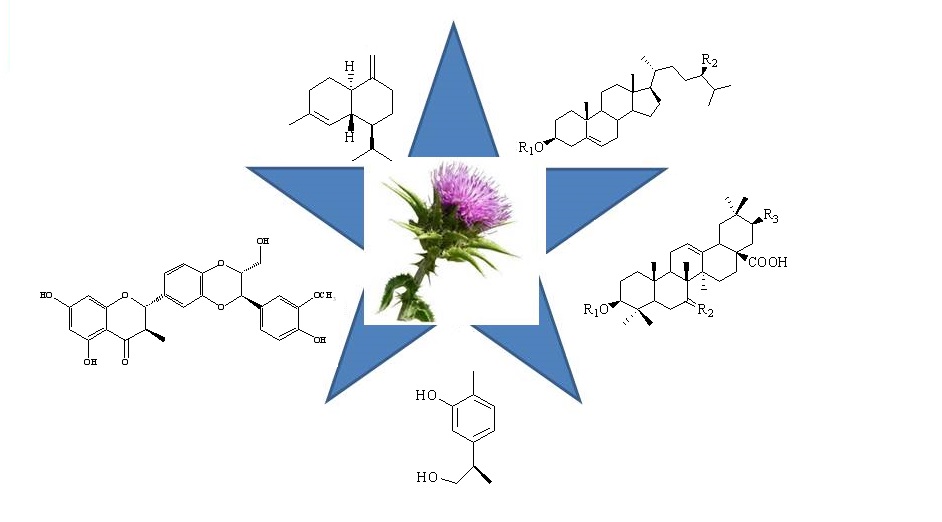JOURNAL 1827
Records of Natural Products
Year: 2021 Issue: 4 July-August
p.243 - 253
Viewed 3388 times.
-
Maria Giordano

-
Giovanni Luongo

-
Sergio Davinelli

-
Afef Ladhari

-
Giuseppina Rita Nappo

-
Maddalena Giordano

GRAPHICAL ABSTRACT

ABSTRACT
The use of Silybum marianum L. for therapeutic purposes has been known since ancient times. Its phytocomplex reduces transaminases and other biohumoral indices in the course of liver disease and also in hepato-renal syndrome. In particular, the flavonolignan component has shown properties that would partially explain the ability of the phytocomplex to induce a certain regeneration of liver cells, stimulate the cellular elimination of toxins and reduce the inflammatory component, present in fatty, alcoholic and hormonal therapies with steroids. S. marianum is also successfully used in the treatment of patients with symptomatic chronic hepatitis, with complete disappearance of clinical symptoms, such as asthenia, loss of appetite, severe meteorism, dyspepsia, and with normalization of transaminases. The same results can be obtained in patients undergoing heavy chemotherapy cycles. Modern herbal medicine uses it in decoction or infusion, however with some caution in patients suffering from hypertension, due to the presence of tyramine. In addition, the extracts of the roots have antioxidant, diuretic and febrifugal properties and those of the leaves have aperitif properties. It is therefore interesting to provide a picture of the different non-flavonolignanic components (terpenes, steroids and essential oils) of the plant and their properties, which have perhaps been wrongly neglected over the past few years.
KEYWORDS- Silybum marianum
- silibinin
- terpenes
- steroids
- biological activity